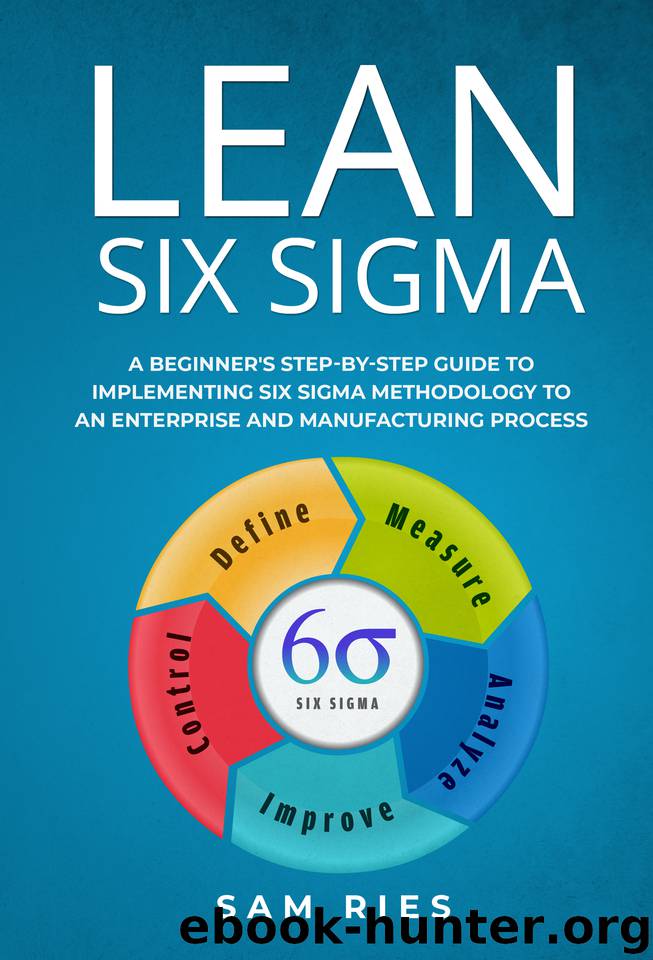Lean Six Sigma: A Beginner's Step-by-Step Guide to Implementing Six Sigma Methodology to an Enterprise and Manufacturing Process by Ries Sam

Author:Ries, Sam [Ries, Sam]
Language: eng
Format: epub
Published: 2020-03-08T16:00:00+00:00
It is worth tying un valore to wip, and hence, the delay in the process. Lean tells us that long initialization times, inactivity times, and poor flow cause delays and that wip ... Is not everything.
Think about the impact of quality on time. It is a translation from parole: it starts with the ten-year process and when it qualifies. Even if i have less than 10% of defects, what effect does this have on recording time and measuring the process? You might think the answer is that the lead time or lead time will also increase by 10%. But in reality, the effect is much worse: the time limit will be a 38% increase, and the minimum number of the process increased by 54%! Thus, we can say that you will be part of the process, with 10% of the default product with a significant delay in time, speed, and recovery. The question is the problem of the process (in this case, poor quality) with the time method.
Not a complete case: in general base, unnecessary in process "(wip) and delay time (there is this word again) more than any reason outside. In short, almost all process problems - wip flaws, low throughput, the complexity of process flow - lead to additional delays in this process. Therefore, time is the global currency for improvement. The clear conclusion is based on the stable time of the guarantee process in a basic process of qualification, speed, and compliance, according to the capital and the value of the capital. Making the process less expensive and faster can only help grow revenue and increase the value more.
Has shown that hotel check-in times are the main cause of customer dissatisfaction. A satisfied customer returns to the hotel chain three times a year, and a dissatisfied customer never returns, but he tells three friends about that experience. As a result, there is an increase in revenue for satisfied customers and, more specifically, to improve check-in time.
Quality-related delay: quality problems (defects) have a non-linear effect on wip (number of objects being processed), costs with no added value, and delay times. Therefore, focusing on the pitfalls of time is a powerful measure that allows us to capture problems caused by good and good practices simultaneously. The challenge is first to define "time slots" and then determine whether the reason for the delay is probably a quality problem (requires the implementation of six sigma tools), a speed problem (requires lean), or a complexity problem. (requires complexity) that limits). Delay detection: identifying time slots for improvement efforts, only 20% of assets are time traps, the biggest inhibitor of shareholder value, how can we find and eliminate them? There are three schools of thought:
The "blind pig" theory: some japanese companies (and some lean consultants in america) use the approach to launch dozens or even hundreds of kaizen (intensely improving events) each year. Finally, click on "herbie" or time trap, and you can reduce timeout periods. In texas, we have a saying, and a blind pig may find it dangerous to take root around an oak long enough.
Download
This site does not store any files on its server. We only index and link to content provided by other sites. Please contact the content providers to delete copyright contents if any and email us, we'll remove relevant links or contents immediately.
| Agile | Lean |
| Quality Control | Six Sigma |
| Total Quality Management |
Hit Refresh by Satya Nadella(8823)
The Compound Effect by Darren Hardy(8443)
Change Your Questions, Change Your Life by Marilee Adams(7324)
Nudge - Improving Decisions about Health, Wealth, and Happiness by Thaler Sunstein(7199)
The Black Swan by Nassim Nicholas Taleb(6725)
Deep Work by Cal Newport(6493)
Daring Greatly by Brene Brown(6194)
Rich Dad Poor Dad by Robert T. Kiyosaki(6114)
Principles: Life and Work by Ray Dalio(5877)
Man-made Catastrophes and Risk Information Concealment by Dmitry Chernov & Didier Sornette(5598)
Digital Minimalism by Cal Newport;(5328)
Playing to Win_ How Strategy Really Works by A.G. Lafley & Roger L. Martin(5326)
Big Magic: Creative Living Beyond Fear by Elizabeth Gilbert(5306)
The Myth of the Strong Leader by Archie Brown(5206)
The Slight Edge by Jeff Olson(5176)
Discipline Equals Freedom by Jocko Willink(5136)
The Motivation Myth by Jeff Haden(4967)
Stone's Rules by Roger Stone(4822)
The Laws of Human Nature by Robert Greene(4728)
